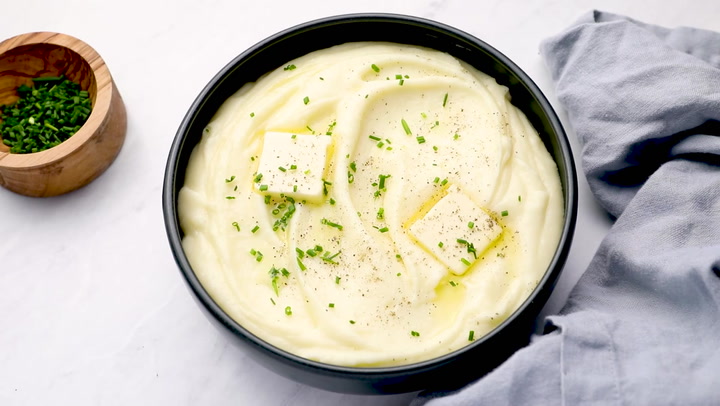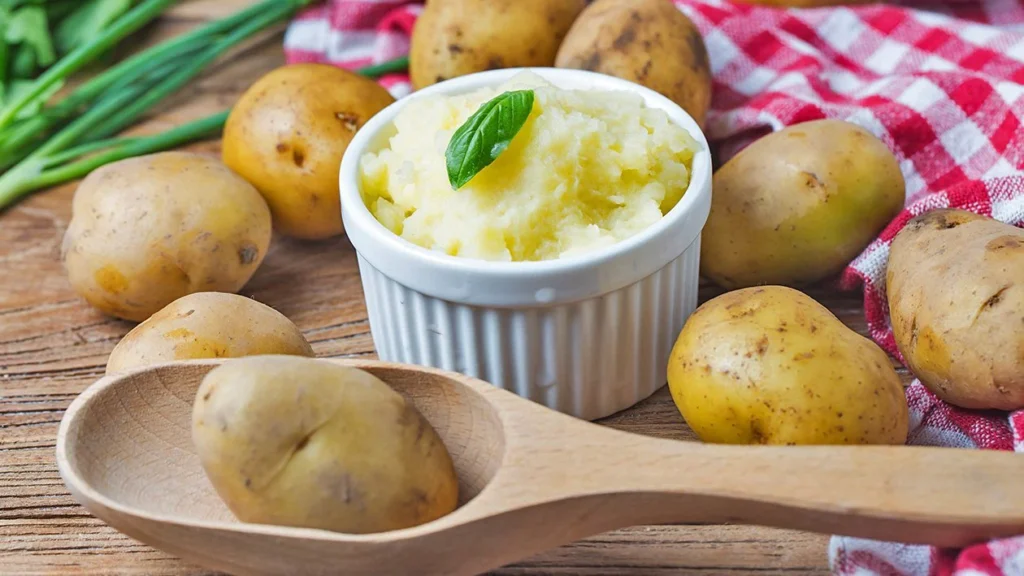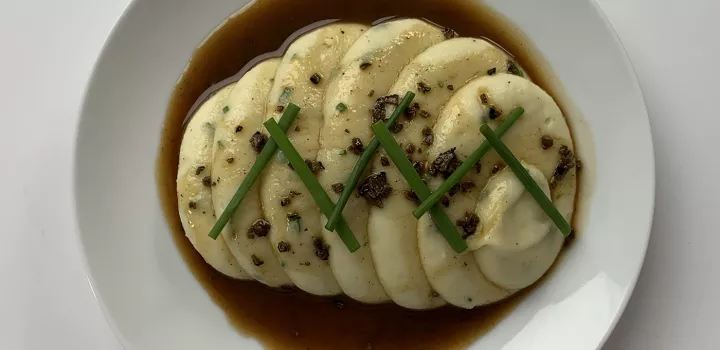Mashed potatoes, a beloved comfort food across the globe, are not just a side dish but a culinary art form.
Whether you’re preparing them for a holiday feast or a simple weeknight dinner, mastering the techniques can elevate this humble dish to new heights.
In this masterclass, we’ll delve into the secrets of creating the perfect mashed potatoes that will have your guests coming back for seconds.

Choosing the Right Potatoes
The foundation of great mashed potatoes starts with selecting the right potatoes.
Russet potatoes are preferred for their high starch content, which results in a fluffy texture when mashed.
Yukon Golds offer a buttery flavor and creamy texture, ideal for a richer mash.
Avoid waxy potatoes like red potatoes, as they tend to result in a gummy consistency.
Preparing and Cooking the Potatoes
Peeling and Cutting: Begin by peeling the potatoes and cutting them into evenly sized chunks.
This ensures even cooking and prevents overcooking.
Boiling: Place the potatoes in a pot of cold, salted water. Bring to a gentle boil and cook until fork-tender, about 15-20 minutes.
Avoid boiling them vigorously, as this can cause them to become waterlogged.
Draining and Drying: Once cooked, drain the potatoes thoroughly and return them to the pot.
Let them sit over low heat for a minute or two to evaporate any remaining moisture.
Achieving the Perfect Texture
Achieving a smooth and creamy texture is the hallmark of great mashed potatoes.
Mashing Technique: Use a potato masher or a ricer for the best results.
Mash the potatoes while they are still hot to prevent lumps.
Adding Warm Ingredients: Incorporate warm butter and cream/milk gradually into the potatoes.
This ensures they absorb the liquids evenly, resulting in a velvety texture.

Flavoring Your Mashed Potatoes
Seasoning: Season generously with salt and freshly ground pepper.
Taste and adjust seasoning as needed.
Enhancements: Experiment with additions like roasted garlic, fresh herbs (such as chives or parsley), grated cheese, or even a hint of nutmeg for added depth of flavor.
Serving and Presentation
The presentation of mashed potatoes can elevate the dining experience.
Garnishes: Sprinkle chopped herbs or a drizzle of melted butter on top for a finishing touch.
Serving Suggestions: Serve alongside roast meats, poultry, or as a hearty side dish for any occasion.
Conclusion
Mastering the art of mashed potatoes involves attention to detail and a passion for creating a dish that is both comforting and memorable.
By choosing the right potatoes, mastering the cooking process, achieving the perfect texture, and enhancing the flavor, you can create mashed potatoes that will delight your taste buds and those of your guests.
Whether you prefer them creamy or fluffy, mashed potatoes are a versatile dish that can complement any meal.

FAQs About Mashed Potatoes
1. Can I make mashed potatoes ahead of time?
Yes, you can prepare mashed potatoes ahead of time and reheat them gently on the stove or in the oven.
Add a splash of cream or milk while reheating to restore their creamy texture.
2. How do I fix over-mashed potatoes?
If your mashed potatoes turn gluey from over-mixing, gently stir in hot milk or cream until they reach the desired consistency.
Avoid using a blender or food processor, as these can make them gummy.
3. Can I use non-dairy alternatives in mashed potatoes?
Yes, you can substitute non-dairy options like olive oil, vegetable broth, or coconut milk for butter and cream.
Adjust quantities to taste for a dairy-free alternative.
4. What should I do if my mashed potatoes are too runny?
To thicken runny mashed potatoes, return them to low heat and stir gently until excess moisture evaporates.
Alternatively, add a small amount of instant potato flakes to absorb excess liquid.
5. How do I store leftover mashed potatoes?
Store leftover mashed potatoes in an airtight container in the refrigerator for up to 3-5 days.
Reheat gently on the stove or in the microwave, adding a bit of liquid as needed to restore their creaminess.
